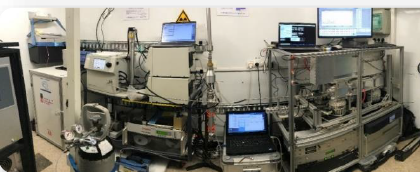Year/Année : 2023
Title/Titre : Ambient air particulate total lung deposited surface area (LDSA) levels in urban Europe
Authors/ Auteurs : Xiansheng Liu, Hadiatullah Hadiatullah, Xun Zhang , Pedro Trechera, Marjan Savadkoohi, Meritxell Garcia-Marlès, Cristina Reche, Noemí Pérez, David C.S. Beddows, Imre Salma, Wanda Thén, Panayiotis Kalkavouras, Nikos Mihalopoulos, Christoph Hueglin, David C. Green, Anja H. Tremper, Benjamin Chazeau, Grégory Gille, Nicolas Marchand, Jarkko V. Niemi, Hanna E. Manninen, Harri Portin, Nadezda Zikova, Jakub Ondracek, Michael Norman, Holger Gerwig, Susanne Bastian, Maik Merkel, Kay Weinhold, Andrea Casans, Juan Andrés Casquero-Vera, Francisco J. Gómez-Moreno, Begoña Artíñano, Maria Gini, Evangelia Diapouli, Suzanne Crumeyrolle, Véronique Riffault, Jean-Eudes Petit, Olivier Favez, Jean-Philippe Putaud, Sebastiao Martins Dos Santos, Hilkka Timonen, Pasi P. Aalto,Tareq Hussein, Janne Lampilahti, Philip K. Hopke, Alfred Wiedensohler, Roy M. Harrison ,Tuukka Petäjä, Marco Pandolfi, Andrés Alastuey,Xavier Querol
DOI : 10.1016/j.scitotenv.2023.165466
Lien vers article : article
Abstract/ Résumé :
This study aims to picture the phenomenology of urban ambient total lung deposited surface area (LDSA) (including head/throat (HA), tracheobronchial (TB), and alveolar (ALV) regions) based on multiple path particle dosimetry (MPPD) model during 2017-2019 period collected from urban background (UB, n = 15), traffic (TR, n = 6), suburban background (SUB, n = 4), and regional background (RB, n = 1) monitoring sites in Europe (25) and USA (1). Briefly, the spatial-temporal distribution characteristics of the deposition of LDSA, including diel, weekly, and seasonal patterns, were analyzed. Then, the relationship between LDSA and other air quality metrics at each monitoring site was investigated. The result showed that the peak concentrations of LDSA at UB and TR sites are commonly observed in the morning (06:00-8:00 UTC) and late evening (19:00-22:00 UTC), coinciding with traffic rush hours, biomass burning, and atmospheric stagnation periods. The only LDSA night-time peaks are observed on weekends. Due to the variability of emission sources and meteorology, the seasonal variability of the LDSA concentration revealed significant differences (p = 0.01) between the four seasons at all monitoring sites. Meanwhile, the correlations of LDSA with other pollutant metrics suggested that Aitken and accumulation mode particles play a significant role in the total LDSA concentration. The results also indicated that the main proportion of total LDSA is attributed to the ALV fraction (50 %), followed by the TB (34 %) and HA (16 %). Overall, this study provides valuable information of LDSA as a predictor in epidemiological studies and for the first time presenting total LDSA in a variety of European urban environments.
